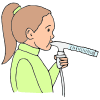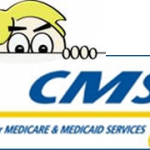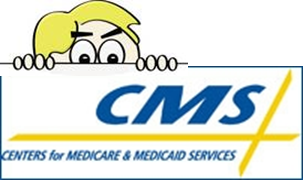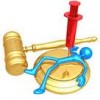 Effective January 1, 2018, CPT modifiers 96 “habilitative services” and 97 “rehabilitative services” will be in effect for use. CMS deleted modifier SZ as of December 31, 2017 and added modifiers 96 and 97 to their edits.
Effective January 1, 2018, CPT modifiers 96 “habilitative services” and 97 “rehabilitative services” will be in effect for use. CMS deleted modifier SZ as of December 31, 2017 and added modifiers 96 and 97 to their edits.
- (MLN Matters MM10385). 1/1/2018 — Add the following new modifiers to the valid modifier list;
– FY: Computed radiography x-ray
– JG: 340B Acquired Drug
– TB: Tracking 340b acquired drug
– X1: Continuous/broad services
– X2: Continuous/focused services
– X3: Episodic/broad services
– X4: Episodic/focused services
– X5: Svc req by another clinician
– 96: Habilitative services
– 97: Rehabilitative services
Private payers will probably adjust their policies to use the 96 and 97 modifiers as well, but you should confirm that with a benefits representative. The addition of a valid CPT modifier should NOT cause a reject and the new modifiers DO clarify your claim for the carrier.
The two new modifiers were created to identify services as habilitative or rehabilitative and made their appearance in the 2018 CPT™;
Modifier 96 Habilitative Services: When a service or procedure that may either be habilitative in nature or rehabilitative in nature is provided for habilitative purposes, the physician or other qualified healthcare professional may add modifier 96- to the service or procedure code to indicate that the service or procedure provided was habilitative. Such services help an individual learn skills and functioning for daily living that the individual has not yet developed, and then keep or improve those learned skills. Habilitative services also help an individual keep, learn, or improve skills and functioning for daily living.
Modifier 97 Rehabilitative Services: When a service or procedure that may be either habilitative or rehabilitative in nature is provided for rehabilitative purposes, the physician or other qualified healthcare professional may add modifier 97- to the service or procedure code to indicate that the service or procedure provided was rehabilitative. Rehabilitative services help an individual keep, get back, or improve skills and functioning for daily living that have been lost or impaired because the individual was sick, hurt, or disabled.
Simply put, rehabilitative services help patients restore functions or skills that have been lost, while habilitative services develop skills and functions that had not been developed previously.
Now that CMS has deleted modifier SZ in favor of the AMA’s 96 and 97, and naturally expect these modifiers to be reported with services such as physical medicine and rehabilitation codes allowing the payer the ability to differentiate habilitative from rehabilitative services.
This differentiation is required by the Patient Protection and Affordable Care Act.
Physical medicine and rehabilitative services are designed to improve, restore, or compensate for loss of physical functioning following disease, injury or loss of a body part which makes them an ideal ancillary inclusion for pain management and rehabilitation practices. Clinicians use the clinical history, systems review, physical examination, and a variety of evaluations to determine the impairments, functional limitations, and disabilities of the individual patient and then address them through design and implementation of a plan of care tailored to the specific needs of the individual patient. The services are not only beneficial for the patient but are a good source of revenue for the practice. Therapy service income often out performs other clinical services on a consistent basis.
Unfortunately, many multidisciplinary consultants are apparently uninformed on Medicare “requirements” on who can actually “perform” the therapy services and often misrepresent permissible delegation and the actual supervision requirements over unlicensed individuals in the physician’s office setting.
As a result, practitioners are learning the rules the hard way as a whistle blower, disgruntled employees or competitor reports prompt on site audits and recoveries in the hundreds of thousands of dollars.
The premise for therapy is based on patients who must have a potential for restoration or improvement of lost functions and require the services of a skilled therapist. Rehabilitation services are typically short term, intensive and have clear goals for services employed to restore and maintain a level of function. Naturally Medicare patients are often subjected to illnesses and conditions effectively treated with physical therapy rehabilitation efforts.
Under Medicare policies, intervention with PM&R modalities and procedures is indicated when:
• an assessment by a physician, NPP or therapist supports utilization of the intervention,
• there is documentation of objective physical and functional limitations (signs and symptoms), and
• the written plan of care incorporates those treatment elements that require services of a skilled therapist for a reasonable and generally predictable period of time.
Skilled therapist; for Medicare reimbursement means that the covered therapy services were “personally performed by one of the following individuals;
• Licensed therapy professionals: licensed physical therapists and occupational therapists
• Licensed PTA with appropriate supervision by a licensed physical therapist.
• Licensed occupational therapy assistants (OTA) with appropriate supervision by a licensed occupational therapist.
• Medical Doctors (MDs) and Doctors of Osteopathy (DOs).
• Doctors of Optometry (ODs) and Podiatric Medicine (DPMs) when performing services within their licenses’ scope of practice and their training and competency.
• Qualified NPPs, including Advanced Nurse Practitioners (ANPs), Physician Assistants (PAs) or Clinical Nurse Specialists (CNS) when performing services within their licenses’ scope of practice and their training and competency (ANP, PA, CNS).
• “Qualified” personnel when appropriately supervised by a physician (MD, DO, OD, DPM) or qualified NPP, and when all conditions of billing services “incident to” a physician have been met.
o Qualified personnel providing physical therapy (PT) or occupational therapy (OT) services “incident to” the services of a physician/NPP must have met the educational and degree requirements of a licensed therapy professional (PT, OT) from an accredited PT/OT curriculum, but are not required to be licensed. (Otherwise called an “unlicensed graduate PT/OT”).
There always seems to be some “consultants” who spend more time advising their clients on possible ways to “beat the system” than educating them on how to do things properly and avoid potential conflicts with regulations. Knowledgeable consultants know that reimbursement for skilled services have an included calculated component based on the amount of “professional” time required to render the service to the patient. You may have noticed this “little requirement” in the description of various “time based” therapy codes where the language clearly states “one-on-one patient contact by provider”.
In my opinion, it is completely illogical for any provider to expect a carrier to pay for professional time when the services were provided by “trained aides” who lack the comprehensive training necessary to exercise professional judgment over the therapy or procedure.
The Federal programs for example, draw fairly clear lines on who is and who is not qualified to receive reimbursement for “professional time” by reviewing Medicare regulations 230.1(C) and 230.2(C) which clearly state;
Services provided by aides, even if under the supervision of a therapist, are NOT therapy services in the outpatient setting and are NOT covered by Medicare.
- Although an aide may help the therapist by providing unskilled services, those services that are unskilled are not covered by Medicare and shall be denied as not reasonable and necessary if they are billed as therapy services.
Services of athletic trainers, massage therapists, recreation therapists, kinesio-therapists, low vision specialists or any other profession may not be billed as therapy services.
• This includes service performed by Chiropractors since Medicare will not pay for any service performed, ordered or supervised by a Chiropractor.
In short, Medicare will not pay for the services of a “qualified provider” unless the services are performed by a “qualified provider”. Learn the difference and apply the principles.
QUALIFIED PROFESSIONAL means a physical therapist, occupational therapist, speech-language pathologist, physician, nurse practitioner, clinical nurse specialist, or physician’s assistant, who is licensed or certified by the state to perform therapy services, and who also may appropriately perform therapy services under Medicare policies.
- Qualified professionals may also include physical therapist assistants (PTA) and occupational therapy assistants (OTA) when working under the supervision of a qualified therapist, within the scope of practice allowed by state law.
- Assistants may not supervise others.
QUALIFIED PERSONNEL means staff (auxiliary personnel) who may or may not be licensed as therapists but who meet all of the requirements for therapists with the exception of licensure. Qualified personnel have been educated and trained as therapists and qualify to furnish therapy services under direct supervision and incident to a physician or NPP.
So next time, your so-called consultant wants you to bill the services of a med tech under your provider number, remember;
Fraud, as defined by Federal Regulation (42CFR455.2) , is an intentional deception or misrepresentation that someone makes, knowing it is false, that could result in the payment of unauthorized benefits. A scheme does not have to be successful to be considered fraudulent.
Abuse involves actions that are inconsistent with sound medical, business, or fiscal practices. Abuse, directly or indirectly, results in higher costs to the healthcare program through improper payments that are not medically necessary. (under the carrier’s published policy).
The primary difference between fraud and abuse is a person’s intent. That is, did they know they were committing a crime?
In either case, the key component is that the perpetrator knew or should have known that the act was improper and under the revised false claims act you could face the possibility of treble damages and civil penalties of up to $11,000 for each improper claim and full membership in the exclusive OIG’s excluded individuals club !![]()
 As of CPT 2016, CPT code 94640 describes treatment of acute airway obstruction with inhaled medication and/or the use of an inhalation treatment to induce sputum for diagnostic purposes. The language change was to clarify the intent that this be a “bundled code” representing both the diagnostic and therapeutic services. It does NOT however bundle multiple units.
As of CPT 2016, CPT code 94640 describes treatment of acute airway obstruction with inhaled medication and/or the use of an inhalation treatment to induce sputum for diagnostic purposes. The language change was to clarify the intent that this be a “bundled code” representing both the diagnostic and therapeutic services. It does NOT however bundle multiple units. 
 After decades of monitoring the annual Medicare therapy caps and temporary exceptions fiascos, I got an early morning call from a Washington DC friend contact that Congress had finally “repealed” the cap on therapy services.
After decades of monitoring the annual Medicare therapy caps and temporary exceptions fiascos, I got an early morning call from a Washington DC friend contact that Congress had finally “repealed” the cap on therapy services. References: CR10001 – Medicare Claims Processing Manual – Pub 100-04 Chapter 12, Sections 50 and 140.
References: CR10001 – Medicare Claims Processing Manual – Pub 100-04 Chapter 12, Sections 50 and 140.  For CY 2017, the CPT Editorial Panel will deleted four CPT codes (97001, 97002, 97003, and 97004) and create eight new CPT codes (97X61-97X68) to describe the evaluation procedures furnished by physical therapists and occupational therapists. There are three new codes, stratified by complexity, to replace a single code, 97001, for physical therapy (PT) evaluation, three new codes, also stratified by complexity, to replace a single code, 97003, for occupational therapy (OT) evaluation, and one new code each to replace the reevaluation codes for physical and occupational therapy – 97002 and 97004.
For CY 2017, the CPT Editorial Panel will deleted four CPT codes (97001, 97002, 97003, and 97004) and create eight new CPT codes (97X61-97X68) to describe the evaluation procedures furnished by physical therapists and occupational therapists. There are three new codes, stratified by complexity, to replace a single code, 97001, for physical therapy (PT) evaluation, three new codes, also stratified by complexity, to replace a single code, 97003, for occupational therapy (OT) evaluation, and one new code each to replace the reevaluation codes for physical and occupational therapy – 97002 and 97004.
 What’s Up With Guidance?
What’s Up With Guidance?